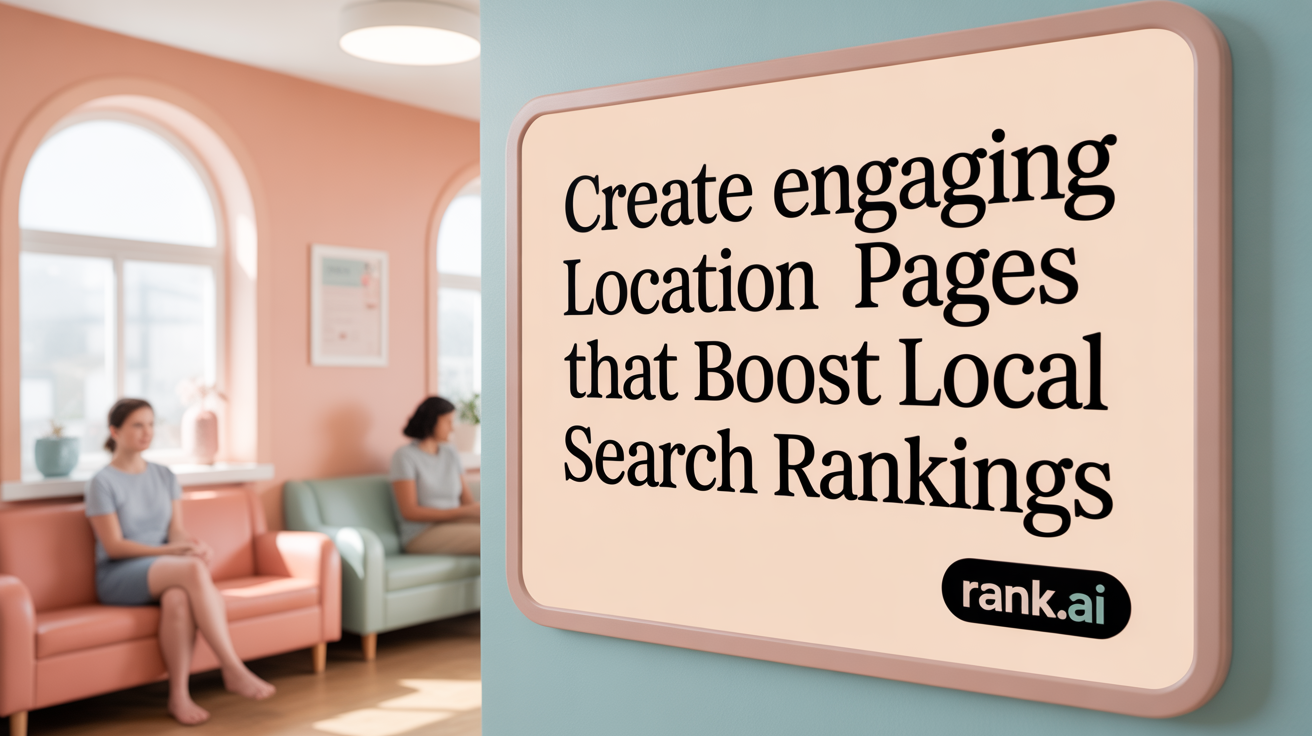Why Local SEO is Essential for Multi-Location Businesses
In an age where consumers turn to online search before visiting a business, multi-location companies must harness the power of local SEO to stand out in diverse geographic markets. Local SEO tailored for multiple sites enables businesses to deliver targeted, relevant information to customers based on their location, driving foot traffic, increasing conversions, and fostering stronger community connections. This article explores key tactics and strategies to optimize local search presence across multiple business locations effectively.
Understanding the Foundations: The Three Pillars of Local SEO

What are the three pillars of local SEO?
The three main forces that shape local SEO success are Proximity, Prominence, and Relevance. Each of these pillars plays a distinct role in how search engines determine the visibility and ranking of a business in local search results. For multi-location businesses, understanding and optimizing these areas are essential to ensure each location stands out in its community.
Proximity is about how close your business is to the searcher’s location. When someone searches for a service or product near their current or specified location, search engines prioritize businesses that are geographically closer. This means that optimizing for proximity involves creating location-specific pages, ensuring your addresses are correct and consistent, and leveraging local keywords.
Prominence refers to the overall visibility and reputation of your business online. This includes earning backlinks from local websites, managing reviews effectively, maintaining active social media profiles, and having consistent citations across directories. The more trustworthy and prominent your business appears, the higher it ranks in local searches.
Relevance deals with how well your business matches the searcher’s intent. This involves aligning your website content, service descriptions, keywords, and Google Business Profile details with what local customers are looking for. Using geo-specific keywords and addressing local interests in your content boosts relevance.
How these pillars influence multi-location SEO
For businesses operating in multiple areas, these three pillars must be carefully balanced and tailored for each location. Each location requires carefully optimized Google Business Profiles, dedicated landing pages, and locally relevant content that emphasizes the unique aspects of that area.
By focusing on Proximity, businesses attract nearby customers through accurate location data and targeted keywords. Elevating Prominence involves building local backlinks, generating positive reviews, and increasing local citations for each location. Ensuring Relevance means customizing content to answer local questions, highlight community involvement, and use relevant keywords.
Together, these pillars ensure that each location not only ranks well but also appeals directly to local consumers, driving foot traffic and conversions specific to that community. Achieving a strong balance among Proximity, Prominence, and Relevance in multi-location SEO strategies maximizes visibility and optimizes local search performance across regions.
Crafting Location-Specific Pages for Optimal SEO Impact

Creating unique location landing pages
For businesses operating across multiple areas, dedicating a separate landing page for each location is essential. These pages should feature distinct content that highlights local features, community events, landmarks, and services specific to that region. Incorporating local reviews, photos, and testimonials enriches the page's relevance, making it more appealing to both users and search engines.
Using geo-targeted keywords
Effective keyword research is vital. By utilizing tools like Google Keyword Planner and Ahrefs, businesses can identify high-intent, location-specific search terms such as 'plumber in Dallas' or 'best coffee shop near me.' These keywords should be naturally integrated into content, headings, meta descriptions, and image alt tags to improve visibility in local search results.
Implementing schema and structured data
Adding schema markup, specifically LocalBusiness schema, to each location page helps search engines understand the content better. This includes details like address, phone number, operating hours, and reviews. Proper schema implementation can also enhance listings with rich snippets, maps, and other rich results, thereby increasing click-through rates.
Targeting on-page SEO elements by location
Optimizing on-page SEO for each page involves customizing meta titles, descriptions, headers, and content with geo-specific keywords. For example, a title like "Affordable Plumbing Services in Chicago" clearly signals relevance. Additionally, embedding Google Maps, local images, and community-related content further targets local intent and enhances relevance.
Employing URL structure best practices
A clean and logical URL structure improves crawlability and user experience. Using a format like domain.com/city-name or domain.com/location-name ensures clarity for search engines. Consistent, keyword-rich URLs not only augment SEO but also make it easier for users to recognize their relevance to their search queries.
By combining these strategies, businesses can craft powerful, location-specific pages that elevate their local SEO performance, attract targeted traffic, and stand out in competitive markets.
Optimizing Google Business Profile Across Multiple Locations

How do you optimize Google Business Profile for multiple locations?
Managing Google Business Profiles (GBPs) for multiple locations requires a strategic approach to ensure each site stands out in local search results.
Start by creating and verifying a separate GBP for each location. This involves claiming each listing, ensuring all business details like name, address, phone number (NAP), and operating hours are accurate and consistent across all profiles. Complete every field, including categories, services, and attributes relevant to each location, to provide comprehensive information to both users and Google.
Utilize bulk management tools available through Google’s platform or third-party services to efficiently update and manage multiple listings. These tools allow you to upload data in bulk, schedule posts, and monitor insights from all locations seamlessly.
Enhance each GBP by adding high-quality photos and videos that showcase your business's interior, exterior, products, or services. Use relevant keywords in photo file names and alt tags to improve visibility.
Incorporate detailed service descriptions and attributes that are specific to each location—this can include amenities, accessible features, or special attributes like outdoor seating.
Encourage satisfied customers to leave reviews. Respond to reviews promptly with personalized messages. Reviews not only build reputation but also significantly influence local rankings.
Keep your information up-to-date with special hours during holidays, new services, or temporary closures. Regularly post updates and offers on your GBP to keep listings active and engaging.
Monitor insights provided by Google to understand customer interactions, popular search terms, and how your profiles rank. Use this data to refine your local SEO strategy.
By maintaining well-managed, complete, and engaging profiles for each location, your business will improve its chances of appearing prominently in local searches, maps, and the local pack—driving more foot traffic and inquiries from your target communities.
Building Local Authority: Citations and Backlinks for Multi-Location SEO

Why Are Local Citations Important?
Local citations are mentions of your business on external websites, including online directories, review sites, and industry-specific platforms. These citations reinforce your business’s relevance and credibility within local communities. When search engines see consistent information across multiple platforms, they are more likely to trust your business, positively impacting your local search rankings.
How Important Is NAP Consistency?
Ensuring your business’s Name, Address, and Phone number (NAP) are consistent across all listings and directories is crucial. Discrepancies can confuse search engines and users, weakening your local SEO authority. Tools like BrightLocal or Yext help manage and synchronize NAP data across numerous platforms, maintaining accuracy and boosting your local credibility.
Strategies for Earning Local Backlinks
Backlinks from local sources, such as community blogs, news outlets, and industry partners, enhance your site’s authority. Building relationships with local businesses and sponsoring community events can generate valuable backlinks. Creating content relevant to the local audience, including city-specific blog posts and case studies, encourages local sites to link back to your pages.
Partnership, Sponsorship, and Local Event Involvement
Engaging with community partners through sponsorships and participation in local events can generate high-quality localized backlinks. Such activities not only improve search rankings but also increase brand visibility and trust within the community.
Automation and Manual Monitoring Tools
Managing citations and backlinks effectively requires tools for automation and manual oversight. Semrush, Moz Local, and BrightLocal can automate citation updates and monitor NAP consistency. Manual efforts, such as responding to reviews and building relationships with local media, add a personalized touch that strengthens your local authority.
Building strong citations and backlinks tailored for each of your locations can dramatically improve your visibility in local search results. Consistent NAP information, proactive outreach, and leveraging community collaborations are vital components of a successful multi-location local SEO strategy.
Harnessing Customer Reviews to Boost Local Search Rankings
Review solicitation strategies
Encouraging customers to leave reviews is essential for enhancing local search visibility. Businesses can implement strategies such as asking for reviews immediately after a service, sending follow-up emails, or using in-store signage and digital prompts. Personalized requests that highlight the importance of feedback tend to perform better.
Managing and responding to reviews per location
Effective review management involves not only collecting reviews but also responding promptly and appropriately, especially on a per-location basis. Addressing negative reviews with professionalism and thanking customers for positive feedback demonstrates engagement and concern for customer satisfaction.
Centralized review monitoring tools
Using tools like ReviewTrackers, Podium, or GatherUp allows multi-location businesses to monitor reviews across various platforms efficiently. These tools consolidate feedback, alert management to new reviews, and streamline responses, saving time and ensuring no feedback goes unnoticed.
Impact of reviews on rankings and reputation
Reviews influence local SEO rankings by signaling relevance and trustworthiness to search engines. A high volume of positive, recent reviews can improve visibility in local packs and map results. Additionally, reviews shape the business reputation, attracting more customers and creating a feedback loop that boosts overall performance.
Using review widgets and location-specific feedback
Embedding review widgets on location-specific pages enables visitors to read current customer feedback directly, enhancing credibility. Displaying reviews tailored to each location's page reinforces local relevance, encourages new reviews, and increases user engagement.
| Aspect | Action | Benefit |
|---|---|---|
| Review solicitation | Use post-transaction prompts and personalized requests | Increase review volume and diversity |
| Management & response | Address reviews promptly and professionally | Improve reputation and customer trust |
| Tools & platforms | Utilize review monitoring software | Efficient oversight of feedback streams |
| Impact on SEO | Maintain high review quality and quantity | Boost local ranking and visibility |
| Visual feedback | Incorporate review widgets & location-specific testimonials | Enhance trust and conversion rates |
Optimizing review strategies across multiple locations not only improves local search rankings but also builds a solid reputation within each community, fostering loyal customer relationships and driving business growth.
Streamlining Multi-Location SEO with Tools and Technology
Managing SEO for multiple locations can be complex, but the right tools and technology make it much more manageable.
Popular SEO platforms such as BrightLocal, Moz Local, and Semrush offer powerful features to handle multi-location campaigns. These tools help automate listings management, citation building, and local rank tracking all from a centralized dashboard.
Automation versus manual optimization is a balancing act. Automated tools efficiently update and synchronize NAP data, monitor reviews, and generate reports. However, manual effort is essential for tailored content, personalized outreach, and responding to reviews in ways that resonate locally.
Bulk editing features in these tools allow quick updates to multiple listings simultaneously, saving time and ensuring consistency. Additionally, dynamic content tools enable location-specific webpage creation, with content that adapts based on the intended city or neighborhood.
Tracking KPIs across various locations is crucial. Custom dashboards integrate data from Google Analytics, Google Search Console, and platform-specific insights. They display metrics like local search rankings, review scores, website traffic, and conversion rates, helping businesses identify which locations perform best.
Effective data management and communication practices include maintaining detailed spreadsheets of each location’s data, setting up automated alerts for performance issues, and fostering clear channels between central marketing teams and local managers. This ensures information accuracy and timely updates across all platforms.
Using these advanced tools and strategies, businesses can streamline their multi-location SEO efforts, boosting visibility and giving each location the attention it deserves to rank well in local search.
Developing an Effective Local SEO Strategy Tailored to Multiple Locations
Creating a successful multi-location SEO strategy requires balancing centralized branding efforts with localized content and tactics. The first step involves designing a clear website architecture that allows easy navigation, with dedicated location pages linked from the homepage. Each location page should display unique, SEO-optimized content that incorporates relevant geo-specific keywords, maps, and local reviews, which help search engines recognize regional relevance.
When it comes to keyword research, focus on a hierarchical approach. Use tools like Google Keyword Planner or Ahrefs to identify broad national and state-level terms, then drill down to city-specific phrases such as "best [service] in [city]" or "near me" searches. This targeted keyword strategy ensures your locations rank for relevant local queries while avoiding keyword cannibalization.
Internal linking is another vital tactic. Implement a logical structure where location pages interlink with blog posts, service pages, and other relevant content, distributing link equity and guiding both users and search engines through your site.
Avoiding duplicate content across location pages and preventing keyword cannibalization are common challenges. To address these, craft unique descriptions for each location, highlighting local features, landmarks, or community events. Use schema markup—such as LocalBusiness schema—to clearly signal location-specific details to Google, improving visibility in local search results.
Regular audits to ensure the consistency of NAP (Name, Address, Phone number) data across directories and your website are essential. Building local citations and earning backlinks from regional platforms enhance your authority in individual markets.
Tracking performance with tools like Google Search Console, Google Analytics, or BrightLocal allows ongoing assessment and refinement of your SEO approach. By combining comprehensive keyword targeting, site structure, content differentiation, and data-driven tuning, multi-location businesses can enhance their local search presence and attract nearby customers effectively.
Overcoming Common Challenges in Multi-Location Local SEO Implementation
Managing SEO for multiple locations presents unique challenges that can hinder visibility and growth if not properly addressed.
One major issue is inconsistent NAP (Name, Address, Phone number) information across platforms. When business details vary between directories and profiles, search engines and customers get confused, which can lower rankings and trust. To counter this, regularly audit all listings and ensure they reflect accurate, uniform information.
Duplicate content is another pitfall. If location pages repeat the same descriptions or keywords without differentiation, Google may see this as spammy, hurting rankings. Developing unique content for each location—highlighting local events, landmarks, or community interests—can improve relevance and avoid duplication issues.
Listings that are managed irregularly also pose problems. Neglecting to update hours, respond to reviews, or optimize profiles can cause missed opportunities and perceptions of neglect. Implementing a centralized management system with designated responsibilities ensures consistent updates.
A weak keyword strategy hampers the ability to target local search queries effectively. Relying solely on broad keywords misses local intent. Conducting geo-specific keyword research using tools like Google Keyword Planner or Ahrefs helps identify relevant, high-intent location keywords.
Solutions include conducting regular SEO audits to identify inconsistencies, training local teams on best practices, and clearly assigning responsibilities for listing management and content updates. Establishing standardized procedures streamlines efforts and maintains high-quality, localized SEO across all branches.
Overall, tackling these challenges proactively enables multi-location businesses to improve local visibility, attract nearby customers, and strengthen their community presence.
Increasing Local Search Visibility with Hyperlocal Content and Visuals

Community-focused blog posts and events
Focusing on the local community by creating blog posts about neighborhood events, local news, and community interests makes your website more relevant to nearby users. Sharing updates about local festivals, charity events, or neighborhood improvements signals to search engines that your business is deeply rooted in the area, boosting local rankings. Hosting or sponsoring community events and sharing content related to these activities can also help build trust and authority in the local market.
Localized imagery and optimized photos
Including high-quality, geo-tagged images of your location, staff, and local landmarks can enhance your site’s appeal and relevance. Optimizing image file names and alt tags with location-specific keywords increases visibility in image search results. Interior and exterior photos of your business with localized descriptions make your listings more engaging and trustworthy to local customers, helping improve click-through rates and rankings.
Use of videos and virtual tours
Videos, including property walkthroughs or staff introductions, provide immersive and engaging experiences for potential customers. Google values rich media content, and virtual tours, especially those embedded with location-specific keywords, can significantly improve on-page engagement. These virtual experiences help users connect with your business, increasing the likelihood of visits and positive reviews.
Embedding maps and location-specific metadata
Incorporating Google Maps on your location pages or contact sections ensures users can easily find your business. Embedding maps with accurate coordinates enhances local relevance. Implementing structured data markup (schema.org LocalBusiness) with detailed address, contact info, and operating hours helps search engines better understand and display your location details, improving visibility on local search results and map packs.
Impact on user engagement and rankings
Utilizing hyperlocal content and vibrant visuals increases user interaction on your website. Visitors are more likely to stay longer, engage with your content, and convert into customers. Search engines interpret high engagement as relevance, positively influencing your local search rankings. Overall, hyperlocal strategies using community-centric content and appealing visuals create a strong local presence that attracts nearby customers and improves your competitive edge.
Measuring Success: Tracking and Analyzing Multi-Location Local SEO Performance
What are the key strategies for an effective local SEO approach?
Effective local SEO requires a strategic use of various tools and practices to boost online visibility for each location. It begins with claiming and verifying each Google Business Profile (GBP), ensuring that all listings have accurate, consistent NAP (name, address, phone number) information. Regular updates to business data and engaging local-focused content attract nearby customers and improve local rankings.
Building citations across reputable directories and earning positive reviews from local customers are fundamental to enhancing credibility and search authority. Developing a local backlink profile through partnerships, sponsorships, and influencer collaborations further strengthens online presence.
Monitoring performance is equally important; using local SEO tools helps track key metrics, manage listings, and refine strategies effectively. These combined efforts contribute to a resilient, scalable approach that sustains long-term success in multi-location local search results.
How can you utilize Google Analytics, Search Console, and GBP Insights to measure performance?
Google Analytics (GA) offers detailed insights into website traffic, user behavior, and conversion data—valuable for understanding how local visitors interact with each location's pages. Google Search Console provides data on search performance, including impressions, click-through rates, and keyword rankings specific to each location.
Google Business Profile (GBP) Insights adds location-specific data, showing how customers find your listings, call or visit your website, and engage with posts or reviews. Combining these platforms gives a comprehensive view of online visibility and customer engagement for every site.
Why is monitoring traffic, rankings, conversions, and review sentiment important?
Regularly tracking these metrics helps identify what’s working and what requires adjustment. Traffic data reveals how well local SEO efforts attract visitors to location pages.
Ranking reports reveal your positions for target keywords in each area. Tracking conversions—such as call clicks, map visits, or online form submissions—measures the direct business impact. Review sentiment analysis helps gauge customer satisfaction and online reputation, influencing local search ranking algorithms.
What role do custom dashboards play in managing multiple locations?
Creating tailored dashboards consolidates data from GA, Search Console, GBP, and other tools into one accessible platform. These dashboards enable quick comparison of performance across all locations, highlight trends, and reveal areas needing improvement.
By visualizing critical KPIs—traffic, rankings, conversions, reviews, and engagement—managers can make data-driven decisions more efficiently. Custom dashboards streamline reporting workflows, ensuring consistent monitoring and proactive optimization of each location.
How does data analysis support refining SEO activities and ROI?
Analyzing collected data uncovers patterns and insights—such as which keywords drive most traffic, the effectiveness of new content, or the impact of reviews. This feedback guides ongoing adjustments, allowing marketers to double down on successful tactics or fix underperforming areas.
Quantitative insights help evaluate ROI by linking SEO activities directly to business outcomes like increased foot traffic or sales. Continuous measurement ensures resources are actively aligned with strategies that deliver measurable results.
Why is continuous, long-term measurement vital?
Local SEO is not a one-time effort; it requires consistent review and optimization. Search engine algorithms evolve, local competition fluctuates, and customer behaviors change.
Long-term measurement helps maintain competitive advantage by adapting strategies based on current data. It builds an understanding of seasonal trends, the impact of recent updates, and the overall health of each location’s online presence, securing ongoing growth and success.
Future Trends and Sustainability in Multi-Location Local SEO
How are emerging technologies such as AI and voice search shaping the future of multi-location local SEO?
Artificial intelligence (AI) and voice search are revolutionizing local SEO strategies. AI-driven tools can analyze vast amounts of local data, helping businesses identify trending keywords, optimize content, and predict customer behavior. Voice search, which is growing rapidly with smart speakers and mobile devices, favors conversational, long-tail keywords and location-specific queries like "near me". To capitalize on this trend, businesses should optimize their location pages for voice search by including natural language keywords and concise answers.
Why is mobile-first indexing crucial for the future of multi-location SEO?
Google now primarily uses mobile versions of websites for ranking and indexing. A mobile-friendly site ensures easier access for local users, especially since most local searches happen on smartphones. Responsive design, fast load times, and easy navigation are critical. For each location, local pages should be optimized for mobile, with simplified layouts, large clickable elements, and localized content to improve visibility in mobile search results.
How can businesses balance automation with human oversight?
While automation tools like local citation management, review monitoring, and content scheduling are efficient, manual oversight ensures relevance and authenticity. Human input is essential for personalized customer engagement, content quality, and managing reviews. Striking a balance involves using automation for routine tasks while dedicating human resources to craft tailored messages, respond authentically, and adapt strategies based on real-time data.
What long-term strategies will help businesses adapt to local market changes?
Continuous tracking of local KPIs, staying updated with search engine algorithm updates, and maintaining flexible content strategies are vital. Businesses should engage with local communities regularly, participate in neighborhood events, and adjust offerings based on local trends. Investing in local partnerships and fresh content tailored to evolving customer interests ensures sustained relevance and search dominance.
How can businesses aim for long-term local search dominance?
A comprehensive approach involves maintaining consistent NAP data, creating hyperlocal content, acquiring local backlinks, and optimizing Google Business Profiles continually. Employing data-driven insights from analytics tools helps refine strategies. Furthermore, actively engaging reviews, local outreach, and features like virtual tours prolong relevance. Commitment to ongoing improvement and adaptation is essential for enduring prominence in local search results.
Sustaining Growth Through Strategic Multi-Location Local SEO
Achieving visibility across multiple local markets demands a well-orchestrated local SEO strategy that balances consistency with tailored, location-specific efforts. By building on foundational pillars like Proximity, Prominence, and Relevance, optimizing Google Business Profiles, cultivating rich local content and authoritative citations, and leveraging technology to streamline management, multi-location businesses can outpace competitors and deepen connections with local customers. Continuous measurement and adaptation to evolving trends ensure sustainable search presence and increased ROI as markets and technologies evolve.
References
- Local SEO for Multiple Locations - Best Practices to Scale
- Local SEO for Multiple Locations—Explained - Uberall
- Mastering Local SEO for Multi-Location Businesses - Stan Ventures
- The 2024 Ultimate Guide to Multi-Location SEO Strategies
- SEO for Multiple Locations: A 2024 Strategy to Boost Your Business
- Local SEO for Multiple Locations: The Complete Guide for Businesses
- Master Local SEO for Multi-location Businesses - BrightLocal
- Multi-location local SEO: A framework for organizational success
- Building Your Local SEO Strategy for Multiple Locations



